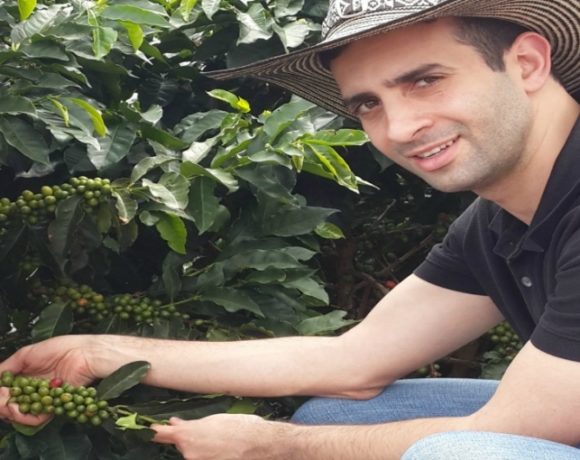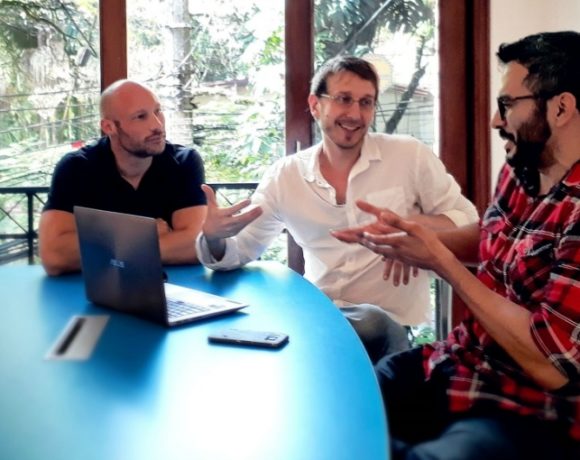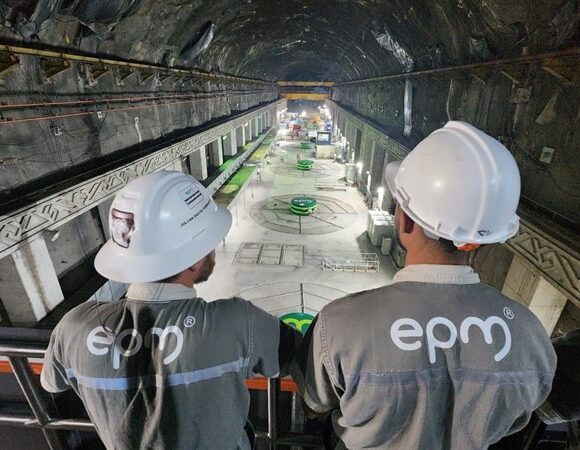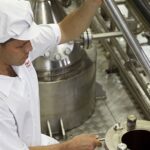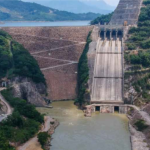Alliances Growing for Medellin Expat Exporters; Specialty Niches Key to Success
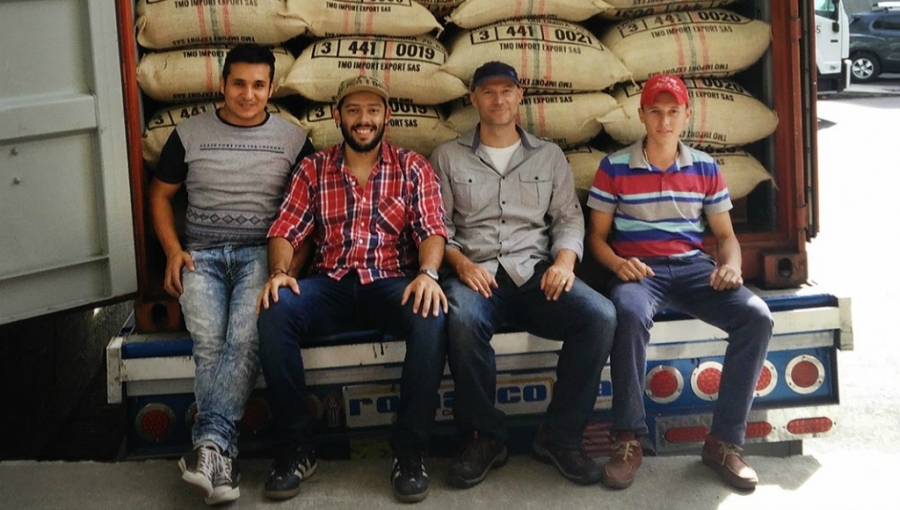
Thirty-five-year-old New Zealand expat Dan Cardiff and 47-year-old Dutch expat Ronald de Hommel seemingly would have little in common — aside from both now living in Medellin and both having launched separate, Colombian-export businesses here.
But despite having been born and raised on opposite sides of the planet — and with wildly different careers prior to launching new ventures here – they have a common, shared vision: Finding overseas markets for specialty farm products, and then sharing their profits with historically disadvantaged, relatively small-scale Colombian producers here.
Both men also share a history of globe-trotting, as Cardiff previously sailed all over the world for years as an employee for luxury yacht owners, while de Hommel worked more than 20 years as an independent photojournalist, taking him all over the world on assignments for newspapers and magazines.
Romances also help explain their current ties to Medellin, as de Hommel married a “paisa” medical-doctor nine years ago — having first met in China, living together two years in Paris, and then becoming parents of two young children here — while Cardiff is in a steady relationship with a bilingual “paisa” working in the fashion industry here.
Cardiff traces his connection to exporting to his New Zealand-based brother Andrew, who began exporting Kiwi specialties 12 years ago. Brother Andrew eventually purchased an independent exporting company and then converted that company (and all its customers) to what’s now called “Cuisine 360” (see: www.cuisine360.co.nz) mainly focused upon exporting New Zealand specialties to Asian markets.
Having grown tired of constant travel for yachting owners, three years ago Dan Cardiff took an eight-month long overland vacation all over South America, where he discovered what he describes as Colombia’s tremendous potential for exporting specialty farm products. This prompted Cardiff to start exporting organic quinoa, but this potentially could expand to other products such as borojó fruit, coconut creams and oils, açai, and — perhaps years from now, with further development — Manuka honey, the latter a specialty health food now produced in New Zealand and sold to Asian customers for a whopping US$30 to $40 for 200- or 250-gram bottles.
Tapping brother Andrew’s sales connections in Japan – where the local owner of a 400-store chain was seeking organic quinoa – Dan Cardiff subsequently found specialty quinoa suppliers in Ecuador and Colombia (in Cauca and Nariño departments), which led to shipments of six container loads (20 tons per container) to Japan over the last two years.
Organic quinoa in “powdered” form is popular in Japan for soups, juices and fruit smoothies, despite its higher cost compared to conventional quinoa, he told Medellin Herald. But this higher cost to consumers also translates into better profitability for local Colombian and Ecuadoran farmers, Cardiff explained.
“Colombia in general has many micro-climates, so there’s incredible potential” to develop new and more-profitable farm-product markets, he said. “Colombia had a terrible history [of violence] but now it’s open to the world — and it has a much better global location and size” than the relatively small and logistically challenged New Zealand, he added.
Initial success with organic quinoa export prompted Cardiff to explore other specialty products, including specialty coffees and organic panela. But he soon discovered that it’s not easy to develop reliable business relationships with many local coffee producers, as this takes much time, dedication, patience and networking.
Medellin Coffee Enters Picture
That disappointing experience with local coffee farmers eventually led him to make contact with de Hommel, whose sole focus is on his two coffee companies – Medellin Coffee (www.medellincoffee.co) and a related, European-focused partnership, The Coffee Quest (www.thecoffeequest.eu).
For de Hommel, the focus is on finding and developing long-term, reliable, mutually profitable relationships with specialty coffee producers — mainly in Antioquia, Huila and Tolima.
Asked how he came to develop an exporting alliance with Cardiff, de Hommel told us: “Dan came to me looking for a reliable supplier of specialty Colombian coffees. He finds customers for me in Asia, and I pay him a commission on sales.
“We’ve also talked about the possibility of his company — Cuisine360 — investing in trilladora [coffee bean milling machine] that I’m planning to install in my warehouse here in Medellin.
“You have to mill coffee here with a certain type of trilladora in order to have a better export product. When husking [milling] you find defects in the bean, such as exterior damage, excessive dryness or over-fermentation. You must remove the damaged beans and also separate beans by size, weight and color in order to ensure shipping of only the highest-quality beans.
“Almost all trilladoras here in Colombia are designed for high-volume, commodity production. But we’re a specialty, low-volume producer. We’ve tried nine different types of trilladoras here and found one type that’s best for our purposes. But that plant is a seven-hours’-drive from here, and it’s also noisy and dusty.
“So, to install our own trilladora here, we’d focus on quality of production and also a higher-quality work environment for our workers. We’d insulate the machine room to reduce noise and dust.
“The trilladoras we use today are in Tuluan [Valle del Cauca], in Salgar [Antioquia] and in Caldas [ Antioquia], but the Caldas plant is very busy and not always available to do work for us. It meets the best quality we can get in Colombia, but that doesn’t meet the specifications of the most demanding buyers, which prefer International Coffee Quality Institute [ICQI] standards and Specialty Coffee Association of America (SCAA) standards,” he added. Hence the plan to install a new, high-quality trilladora here.
As for the European operations (based in Holland), de Hommel’s partners – Michiel Lampers and Friso Spoor – initially had started as sole-proprietor specialty coffee sellers, where de Hommel first got to know them at international specialty coffee fairs in Europe. That eventually led to sharing of a trade-booth, and then a formal partnership.
“I started this business five years ago by cold-calling coffee roasters in the EU, and then later I attended specialty-coffee trade show fairs,” de Hommel explained to Medellin Herald.
“Michiel and Friso’s focus wasn’t on Colombia, but rather on other countries, where they’d visit farms and do cupping. But I’m in Colombia year-round — and I’m exposed to many more types of coffees here — so we weren’t competing. Now we [The Coffee Quest] source specialty coffees from eight different countries.”
However, as his coffee-exporting business grew, “I’ve had to cut back on photojournalism. I’ve swapped my old love [photojournalism] for my new love [wife, kids and coffee], although I still do occasional local photo-shoots here, such as a recent assignment to photograph the Dutch jazz trumpeter here — Maite Hontelé — or one-day assignments that have something to do with coffee or cacao.”
Asked how he found these specialty coffee farmers, de Hommel explained that “just living here in Medellin, just about everybody has a relative or friend or acquaintance that is growing coffee. I also have hired people to help on quality control and exports, and they also know coffee farmers. One of my employees especially knows a lot of farmers in southern Colombia, and we also have local agents all over the country.
“It took years to set-up this network of contacts, and it’s not easy. For example, a lot of specialty-coffee roasters in the U.S. and Europe like to visit farms here, but they don’t know how to handle the shipping of coffee from here to there, so they contact me — and we offer them a complete supply chain, for a service fee. We prefer that the roaster negotiate a price directly with the farmer, and we want to ensure high quality and a fair price to the farmer. So sometimes we advise farmers on fair prices.
“It’s true that one of the problems facing coffee farming here is that many of the younger generation are leaving the rural areas to come to cities, where they hope to find higher-paying jobs. But our focus on specialty coffees and offering higher, stable prices we hope will encourage more of those kids to stay in farming. Our quality-rating system ensures that prices don’t change even though there’s a lot of volatility in coffee futures markets.”
As for production issues, “our specialty coffees require very careful farm practices, although not necessarily ‘organic,’ as many local farmers don’t have access to organic fertilizers,” he explained.
“Coffee rust [‘la roya’] can be a problem with the less rust-resistant, but better-tasting Caturra or Typica varieties — as opposed to the rust-resistant Castillo variety, which is favored by Colombia’s Federacion Nacional de Cafeteros.
“But as long as farmers employ careful practices and use correct [pest and disease controls], then when growing Caturra they can achieve a higher yield per hectare than with rust-resistant Castillo.
“There are some alternative pesticides or disease-control products, but usually there’s a lack of research to back their claims — and there’s hardly any research being done here. The Federation just tells farmers to use rust-resistant varieties, with the aim of having 98% of all coffee plantations here to have only rust-resistant coffee. I see a problem there, as there should be choice available. And we pay from 25% to 200% more to farmers for specialty coffee, compared to commodity coffee.
“There are so many varieties of specialty coffees that can be produced. For example, ‘Geisha,’ which is a favored variety that in Panama sells for up-to-US$600 per pound. So most Panama producers are focused on that, and they need only one-half of a hectare to produce a good income, whereas here in Colombia you need at least 10 hectares.
“We’ve been growing our business fast. This year I’m shipping three containers – 60,000 kilos, while last year it was one-third of that, and for 2018, I plan to double my volume, especially once I have my own mill here in Medellin.
“Longer-term, we want to be a mid-size player, around 30 containers per year. But that’s still small enough to maintain personal relationships with farmers.
“We’re already pretty well known among specialty coffee roasters, and I also meet more people at mills and at coffee trade shows. And farmers in Huila looking for buyers often find us. We also continue to do farm visits and visit local coffee producer associations.
“But some of the biggest challenges to the business here are the poor roads in remote areas, where some of the best coffees are produced. For example, the La Victoria producer association in Huila, which has 30 member farmers, has farms that are six-hours’-drive from the main warehouse. And in some cases, only a small truck or a horse can reach those farms, over steep, narrow roads. Sometimes this means loading and reloading from smaller trucks to bigger trucks — and that adds a lot of cost.”
‘Green’ Sailboat Shipping to Europe
Meanwhile, de Hommel this year began experimental shipping of small quantities of specialty coffee by sailboat from the Colombian port of Santa Marta to Amsterdam, on a World-War-II-era wooden ship converted to sail power. This company’s slogan is “Fair Transport,” offering fair-trade coffees paired with zero-global-warming shipping emissions.
That sailing company originally didn’t have all the permits to do such shipping from Colombia. So later-on, “I arranged all the permits and tax requirements, and then we exported 70 bags with them. It’s a lot more expensive –US$2.50 per kilo by sailboat compared to US$0.15 per kilo in conventional shipping, and it takes three months [rather than days] to ship to Amsterdam.
“This means this coffee is a lot more expensive. But there’s a market for this in Europe, and the warehouse we have in Amsterdam also uses electric vehicles to transport from port to warehouse,” again to avoid “greenhouse” emissions and boost the “green” cachet for the final product, he added.

